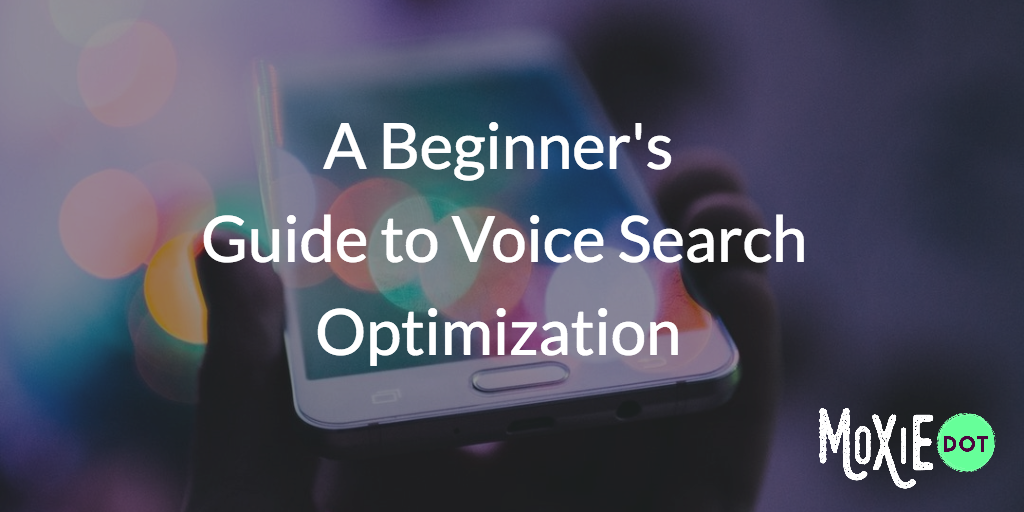Voice search continues to skyrocket, as more AI assistants like Google Home, Google Assistant, and Amazon’s Alexa continue to be released in new technology, like speakers and smartwatches. While Apple is usually thought of as the innovator in the technology sector, Google and Android are actually leading the charge in voice search.
As Aleh Barysevich points out in an SEJ article, even though iPhones seem all the rage, they actually make up less than 16 percent of the market share: the 2016 market share went overwhelmingly to Android at almost 84 percent.
Google CEO Sundar Pichai said in his 2016 Google I/O keynote that about 20 percent of all mobile Google searches are now voice. And since Google owns Android, they effectively own the market share of mobile devices through which they can grow their mobile search empire.
Below is a brief overview of the current state of voice search, as well as opportunities to optimize for voice queries on websites and product pages.
Smartphone Assistants
Siri may have been the first to have the biggest awareness in the smartphone assistant realm, but Cortana, Amazon’s Alexa, and Google’s Assistant are quickly evolving to offer more features that consumers are looking for.
How Do Consumers Use Voice Search on Mobile?
There is still surprisingly little reliable data about how consumers actually use voice search in their everyday activities. Purna Virji of Bing pointed out a voice search study in 2016 that showed voice search being most popular amongst 18-29 year-olds at 71 percent saturation, but 30-43 year-olds were second most popular at 59 percent. Users older than 44 use voice search about 39 percent of the time.
Furthermore, the top reasons most people are using voice search is to ask for directions, dictate texts, and create search queries.
As voice search permeates more of the market, local businesses are going to get more business and web traffic from voice queries. After all, 88 percent of consumers use their smartphone to find local businesses, and voice search is quickly helping them find what they are looking for nearby.
To take advantage of this usage in voice search, make sure your local and map listings have your correct address and all other contact information is filled out (such as website, operating hours, and phone number) in case a user tries to follow up on a voice search with an action, like calling the business.
The Evolution of Home Assistants
Voice search started in mobile but has now rolled out to home devices. Amazon Echo, a voice-enabled wireless speaker, came out in 2014 and used the “Alexa” AI software to provide multiple services to owners, like ordering items on Amazon, checking the top news headlines, and even running the radio and Spotify through integrations set up through the Alexa app.

Like the Echo’s reliance on Amazon products and integrations, Google Home is another voice-enabled wireless speaker that relies on Google products to bring users search results through voice as well as options to help users “control their day” by giving reminders, traffic alerts, and travel information. Google Home came out in November 2016 and uses the Google Assistant AI, which is now being rolled out by default in many new Android smartphones and is available inside of Google Allo, Google’s latest messaging application.
Prices for these two devices range from $150-$180 as of press time and come with a variety of additional speaker add-ons or color customizations, depending on the device.

The rollout of these home assistants is crucial to the development of voice search because it has taken voice search on mobile, which most people use while on the go to offering options while consumers are in their home. This will change how users utilize voice search.
For instance, Google is already running commercials for Google Home that showcase how consumers can use it. Far from local search queries, most of the commercials surround informational queries (instead of purchase intent), like measuring cup size or scientific facts about dinosaurs.
Google is clearly trying to make its Home device an integral part of consumers’ every day lives— part of the family. They want their AI software to be a partner that assists with anyone a user might need, whether that’s to know when their next business meeting is or to order pizza for family game night.
How to More in Visible in Voice Results
SEOs have started to experiment with voice search to see what works best for certain queries like, “What’s the best pizza restaurant near me?” or “Who makes the best headphones?” If you are Google’s top choice for text-based queries, you’re going to have a better chance at being the answer for voice-based ones. Use rich snippets and have a good standing in Google’s new mobile-first index to increase your website’s chances of being more “visible” for voice searches. Try using Google’s structured data markup tool to ensure that your markup is correct.
You should also ensure your website is mobile-friendly with Google’s tool and make the move toward responsive web design, which optimizes the layout based on whatever device the user is on. This is now becoming more preferable than mobile subdomains or websites, like, m.website.com or website.com/mobile.

Finally, it was also announced at Google I/O this year that Google is starting to roll out an Assistant Directory, which is a discovery channel that helps users find connected apps and services that they can use with the Assistant AI. This brings about a whole new set of possibilities about optimizing for voice assistant directories and their connected services. For instance, Domino’s is currently the only pizza chain that users can use with Amazon Echo, but what happens when more competitors jump on the bandwagon? How will Echo decide which business to use when a user says, “Alexa, order me a pizza”?
These decisions will be lead by optimizing, which will help AI chose the best service provider or business for the job. While connected business directories are still relatively new in AI and voice search, SEOs need to keep up with voice search as the market turns toward more voice-activated queries using home assistants and smartphones.
What Content Does Best in Voice Search?
Based on what we know, users currently run the majority of voice searches on their phone to find out information about businesses, like directions or proximity to their location. Home assistants are mainly used to look up information, like sports scores or trivia. Both mobile and home devices are used to sync with integrated apps and resources, like calendars, music, and news.
What this means is, by optimizing for mobile searches as a whole, you are increasing your chances of being found via voice search. Make sure key phrases someone would use conversationally to talk or ask about your business are included on informational content pages. This could include phrasing headlines in the form of a question (e.g. When was the t-rex on the earth?) or stating a fact plainly that gives the user the exact information they want to hear.
For instance, “The t-rex lived 85-65 million years ago during the late Cretaceous period” would likely do better for voice search queries than “The t-rex was a fearsome beast that was the top predator in its age, the Late Cretaceous period. Even though that was over 65 million years ago, scientists are still entranced by this dinosaur.” While elaborate sentences are by no means wrong to include, make sure your key data and facts are stated more plainly than the details surrounding them.
We as SEOs are still on the horizon of the possibilities of voice search. As we continue to compile more data about its use, more opportunities will arise to become more visible in this new channel of discovery through technology.
Screenshots taken by author May 2017.

